15.02.2025
The flyby is a gravity assist that will save the spacecraft fuel as it prepares to land on the moon.
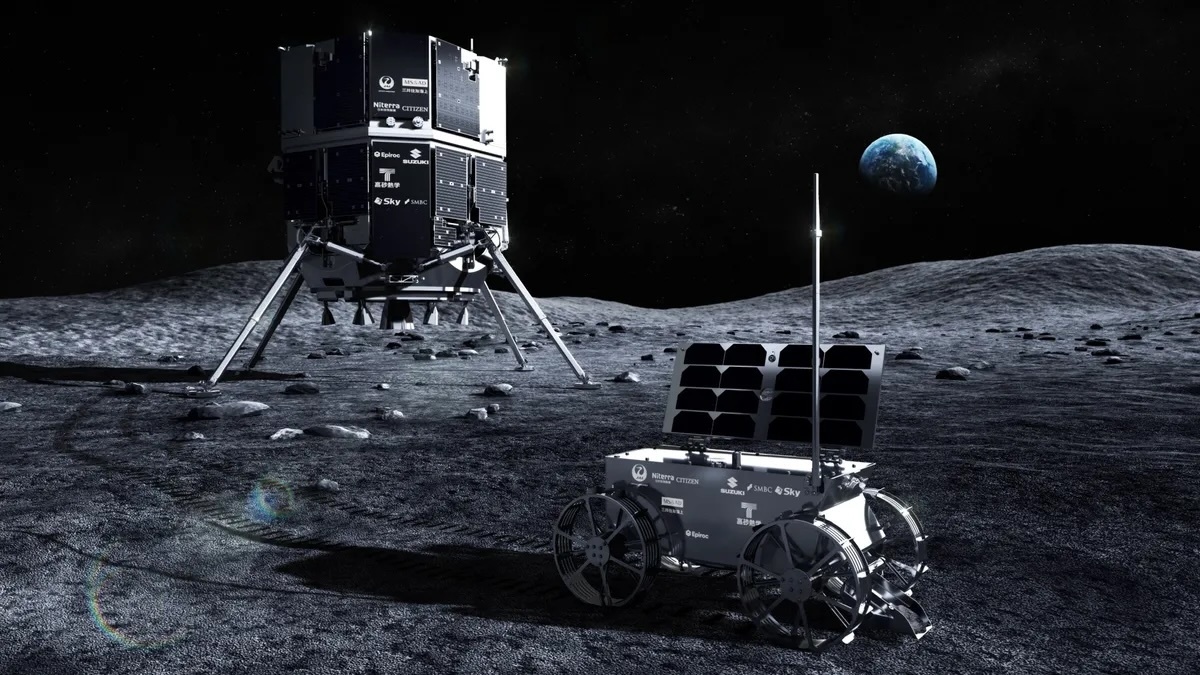
An artist's impression of ispace's RESILIENCE lander and micro rover on the surface of the moon. (Image credit: ispace)
The second lunar lander from Japanese space exploration company ispace is ready for a flyby of the moon as part of its elongated moon landing journey.
ispace's Resilience lander launched on Jan. 15 atop a SpaceX Falcon 9 rocket, along with Firefly Aerospace's Blue Ghost lander. It is taking an energy-efficient, circuitous route to the moon, and only last week performed a crucial maneuver to raise its orbit and set up the lunar flyby.
The flyby is a gravity assist that will save the spacecraft fuel, altering the spacecraft's trajectory into a low energy transfer. That means the maneuver will set up a later rendezvous with the moon that will allow Resilience to enter lunar orbit with a much smaller engine burn than required for a more traditional, direct four-day trip to the moon.
"During the flyby the Resilience lander will experience the biggest change in velocity of the mission, and yet, due to the way gravitational forces work, it will not actually feel any acceleration," ispace stated in a Feb. 13 post on social media platform X.
"The moon will pass by so closely that it will alter its [Resilience lander] trajectory into the second orbital phase of the mission, the low energy transfer. And that is the lunar flyby!," another post on Feb. 12 stated.
ispace did not reveal a precise time of the flyby, stating on X on Feb. 12 that it would take place on Feb. 14 (UTC) but later posting on Feb. 13 that the event was two days away. Resilience was 286,000 miles (460,000 kilometers) away from Earth on Feb. 12, out beyond the distance of the moon.
The spacecraft may take the opportunity to test sensors and return images of the moon from its close approach with our celestial neighbor. Resilience recently imaged Point Nemo, the most remote place on our planet, while still relatively close to the Earth.
Resilience is expected to attempt to land in Mare Frigoris ("Sea of Cold") in the northern hemisphere of the moon around late May or early June. The lander carries a range of payloadsincluding the Tenacious micro rover for mobile exploration.
Meanwhile, Resilience's flight partner, the Blue Ghost lander, is all set to reach lunar orbit after a translunar injection burn on Feb. 8.
Quelle: SC
----
Update: 17.02.2025
.
ispace Completes Success 5 of Mission 2 Milestones
RESILIENCE Lunar Lander Completes Historic Lunar Flyby
TOKYO–February 15, 2025–ispace, inc. (ispace) (TOKYO: 9348), a global lunar exploration company, announced today that the RESILIENCE lunar lander successfully completed a flyby of the Moon on Feb. 15, 2025, reaching its closest point at 22:43 UTC, Feb. 14, 2025. The RESILIENCE lander came within approximately 8,400 kilometers of the Moon’s surface on its flyby, a historic first of its type for a Japanese private, commercial lunar lander.
RESILIENCE is now on a trajectory out to deep space before completing orbital maneuvers that will bring it back towards the Moon in advance of lunar orbit insertion. The date and time of the insertion maneuver have yet to be determined but are expected around early May.
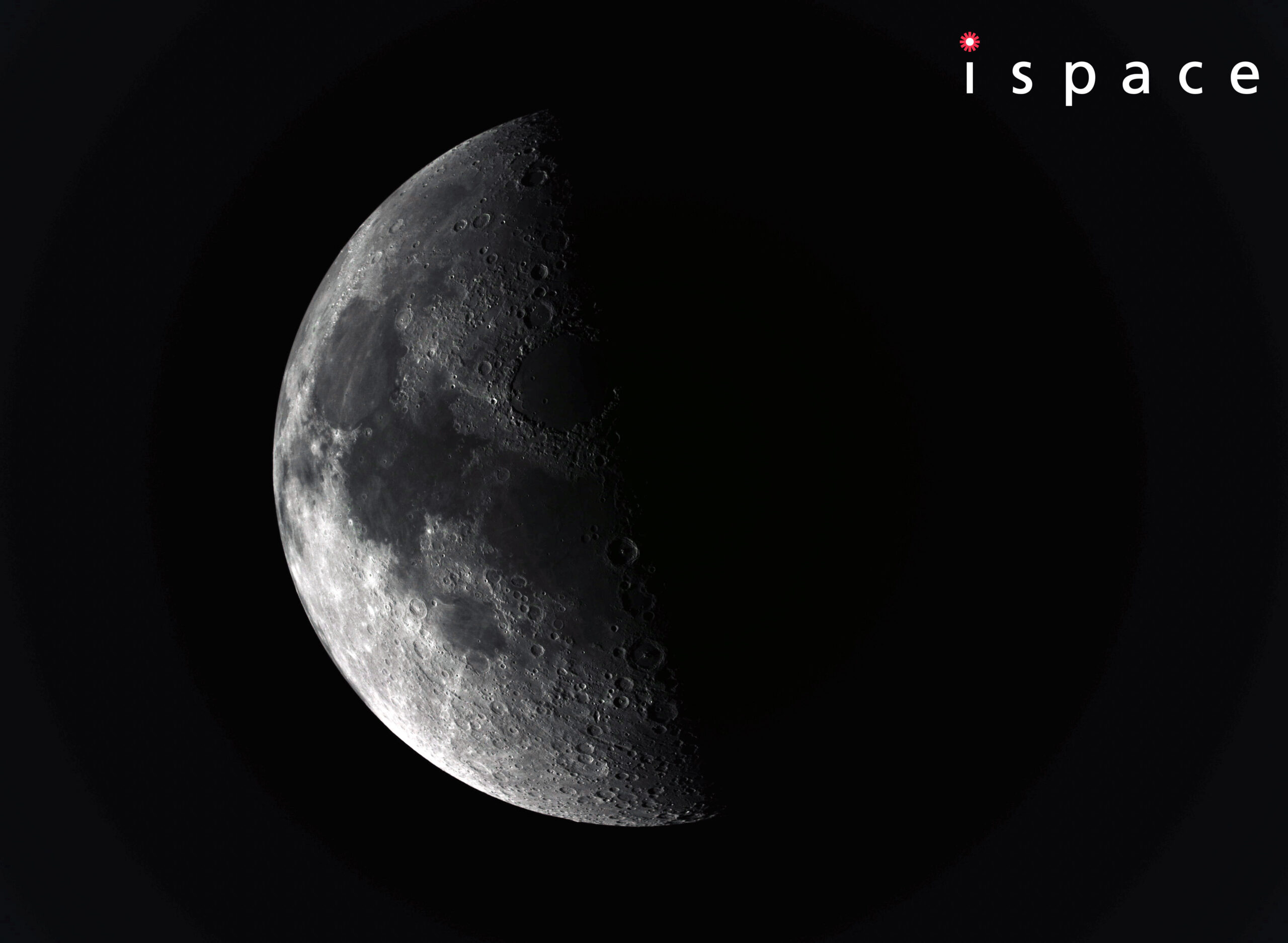
An image of the Moon taken on Feb. 15, 2025, by ispace’s RESILIENCE lunar lander at an altitude of 14,439 km.
Previously, RESILIENCE completed an orbital maneuver at 19:40:18 UTC, Jan. 16, 2025, at 250,000 kilometers from Earth, setting the lander on a course towards the Moon in order to complete the flyby and verifying operation of the main propulsion system, as well as the related guidance, control, and navigation system. The orbital maneuver required a main thruster burn lasting 16 seconds.
RESILIENCE was launched on a SpaceX Falcon 9 rocket at 6:11:39 UTC, Jan. 15, 2025, and was successfully deployed from the rocket at 7:44:24 UTC. The RESILIENCE lander has completed the Earth orbit (① phase below) as well as the lunar flyby, known as Success 5. It has now entered a low energy transfer orbit (② phase below).
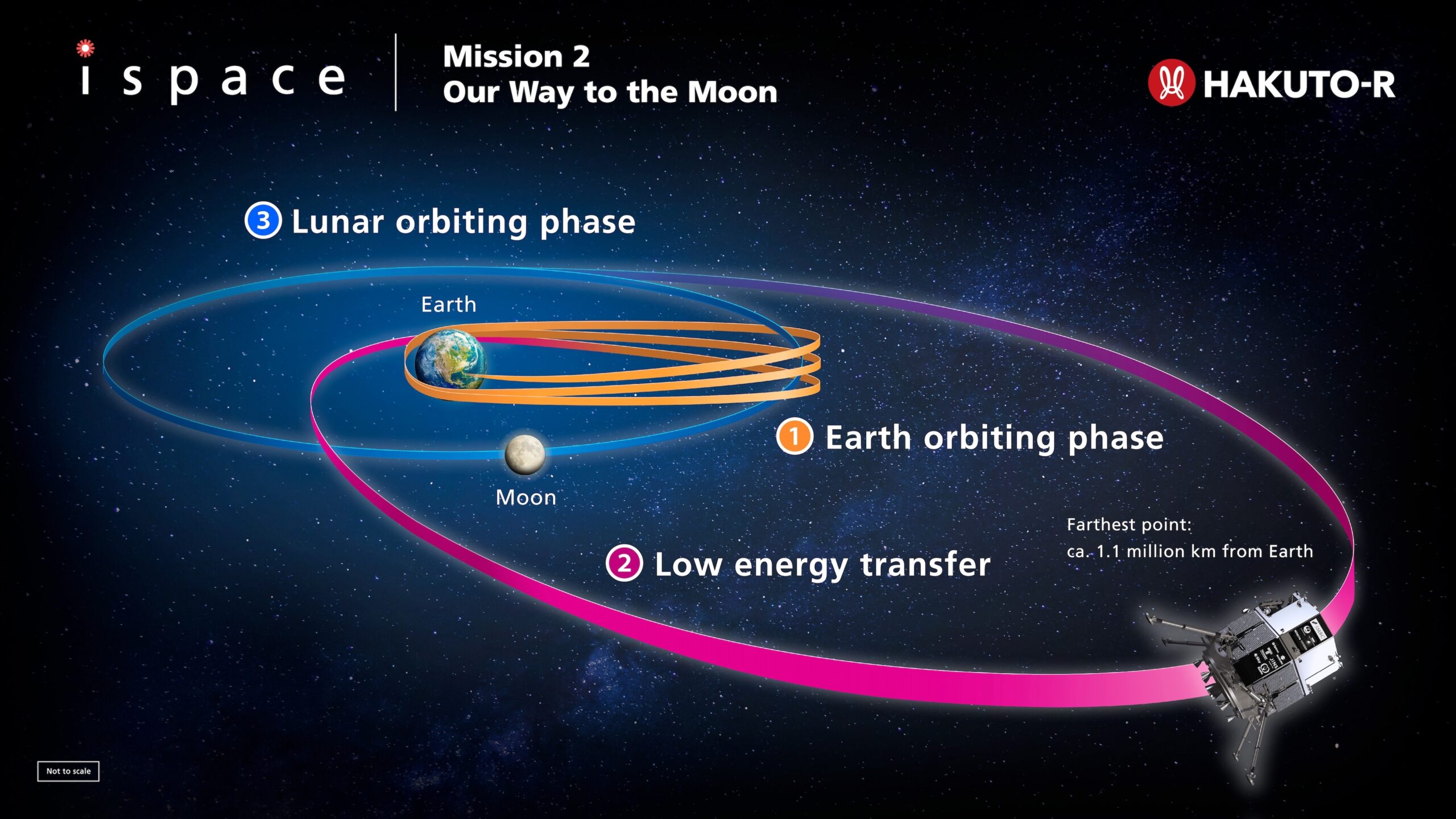
“I feel very confident about the RESILIENCE lander, which has steadily achieved milestones and is on track for success, and our employees who have made meticulous preparations for this impressive flyby of the Moon,” said Takeshi Hakamada, Founder & CEO of ispace. “I look forward to watching the ongoing journey of RESILIENCE, navigating a low-energy orbit through deep space taking it at as far as 1.1 million kilometers from Earth, before heading to the Moon.”
Mission 2 Milestones
ispace has released a transparent set of criteria known as Mission 2 Milestones between launch and landing and aims to achieve the success criteria established for each of these milestones. The results from this mission as part of the HAKUTO-R lunar exploration program, will be weighed and evaluated against the criteria and lessons learned will be incorporated into future missions already in development.
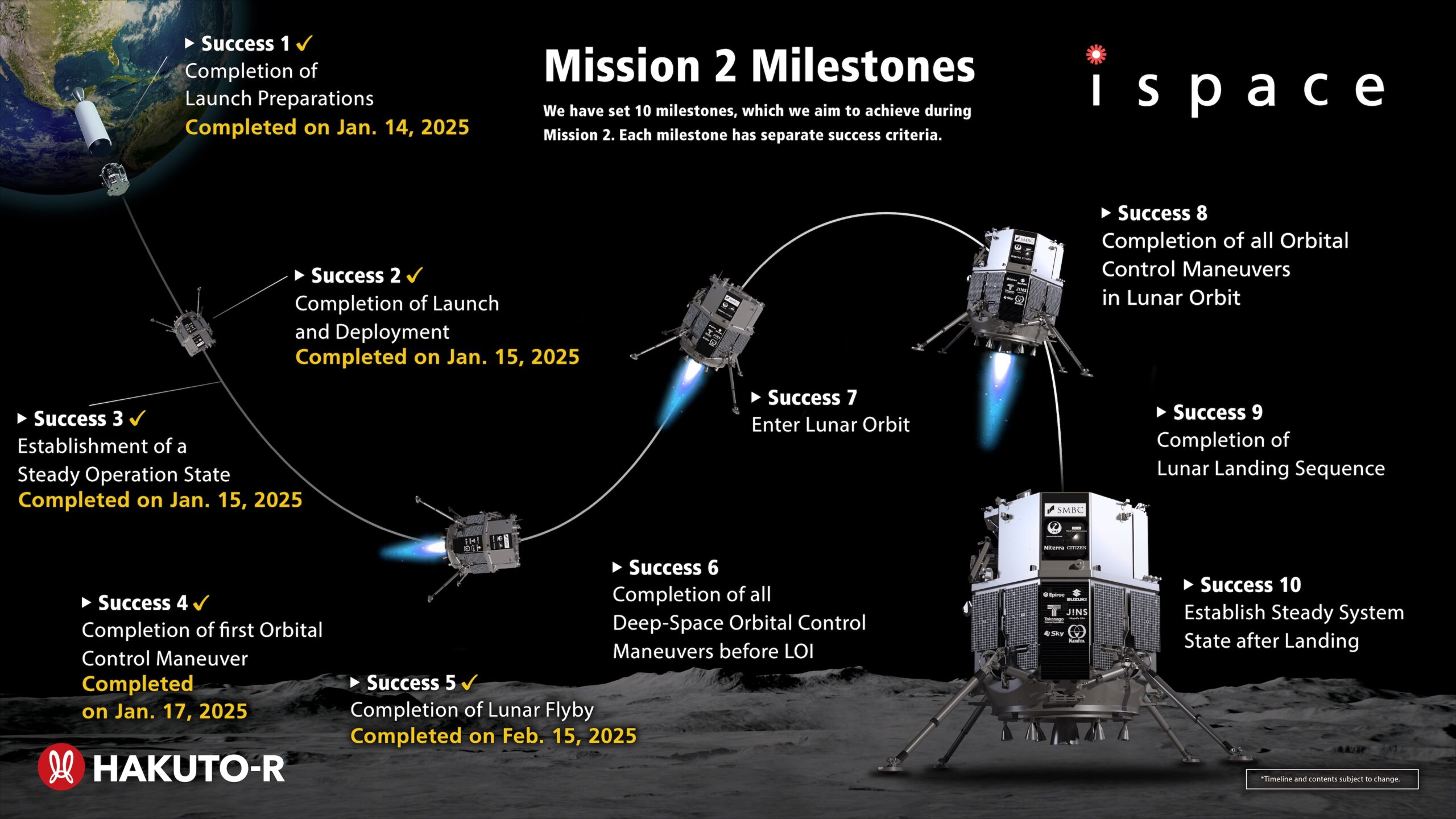
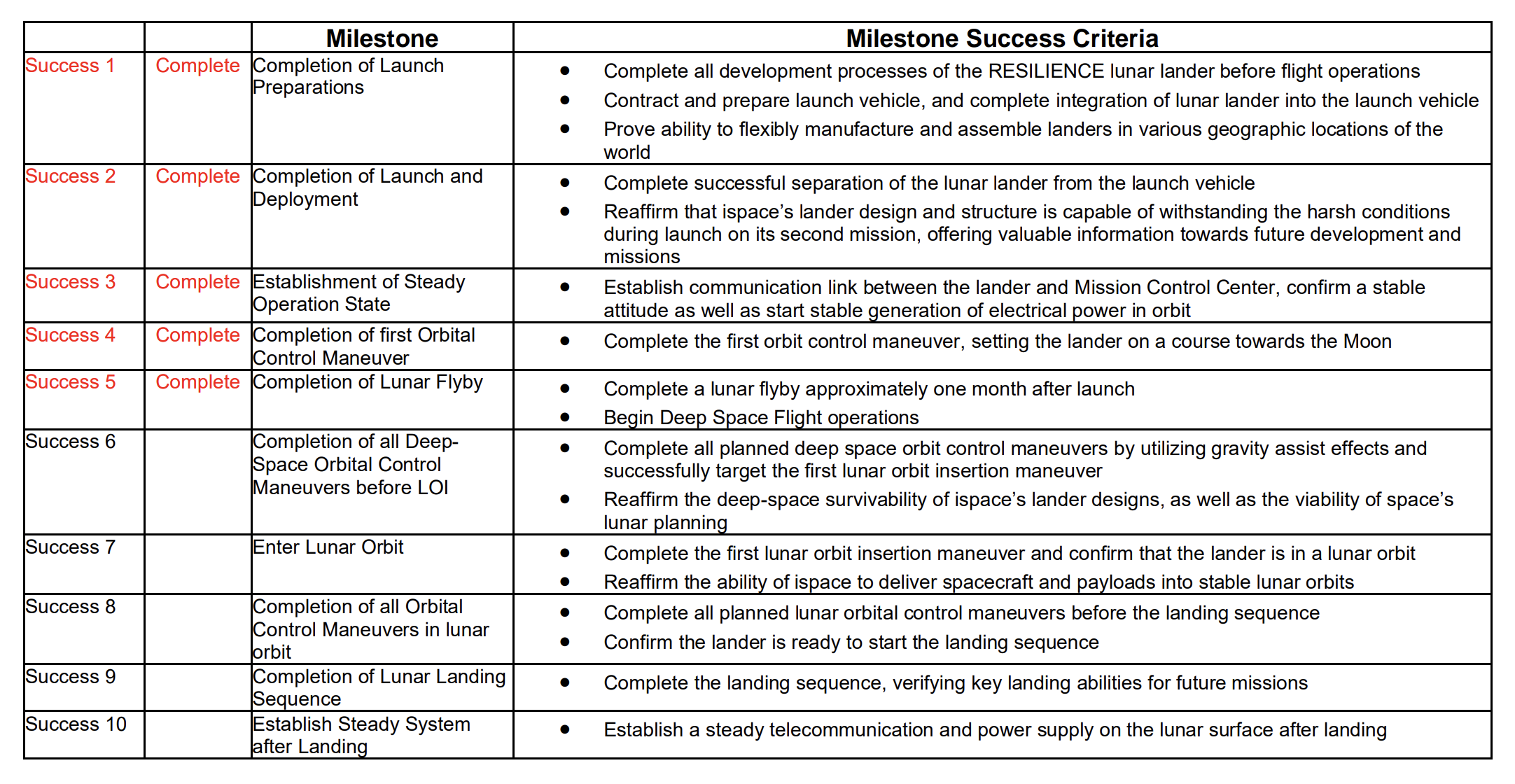
Payloads
On board the RESILIENCE lunar lander will be commercial customer payloads including:
- Water electrolyzer equipment: From Takasago Thermal Engineering Co.
- Food production experiment: A self-contained module from Euglena Co.
- Deep space radiation probe: Developed by the Department of Space Science and Engineering, National Central University, Taiwan
- Commemorative alloy plate: Developed by Bandai Namco Research Institute, Inc. and modeled after “Charter of the Universal Century” from the animation Mobile Suit Gundam UC
- TENACIOUS micro rover: Developed by ispace-EUROPE, this rover will explore the landing site, collect lunar regolith, and relay data back to the lander. It will be equipped with a forward-mounted HD camera and a shovel.
- Moonhouse: A model house by Swedish artist Mikael Genberg that will be mounted on the rover.
The RESILIENCE lander will serve as a cultural artifact, carrying a UNESCO memory disk that preserves linguistic and cultural diversity.
ispace is leveraging its global presence through its three business units in Japan, the U.S., and Luxembourg, for the simultaneous development of upcoming missions. Mission 2, featuring the RESILIENCE lunar lander, is led by ispace Japan and was launched on Jan. 15, 2025. In this mission, TENACIOUS micro rover developed by ispace Europe SA to be deployed on the lunar surface to conduct technological demonstration of regolith extraction as well as mobility on the lunar surface Mission 3, debuting the APEX 1.0 lunar lander, is led by ispace-U.S. and is expected to launch in 2026. The company’s fourth mission, which will utilize the Series 3 lander, currently being designed in Japan, is scheduled to be launched by 2027.
Quelle: ispace
+++
Luxembourg Space Agency & ispace Release Mini Documentary on Lunar Micro Rover Development
4-part Mini-Series Details the Collaborative Efforts of ispace & the Luxembourg Space Agency to Develop and Send Europe’s First Lunar Rover to the Moon
TOKYO—February 10, 2025—ispace, inc. (ispace) (TOKYO: 9348), a global lunar exploration company, and the Luxembourg Space Agency (LSA) today announced the unveiling of a new mini-series on the development of the TENACIOUS micro rover, Europe’s first-ever lunar rover designed, manufactured, assembled, tested in Luxembourg and launched to the Moon aboard the RESILIENCE lunar lander.
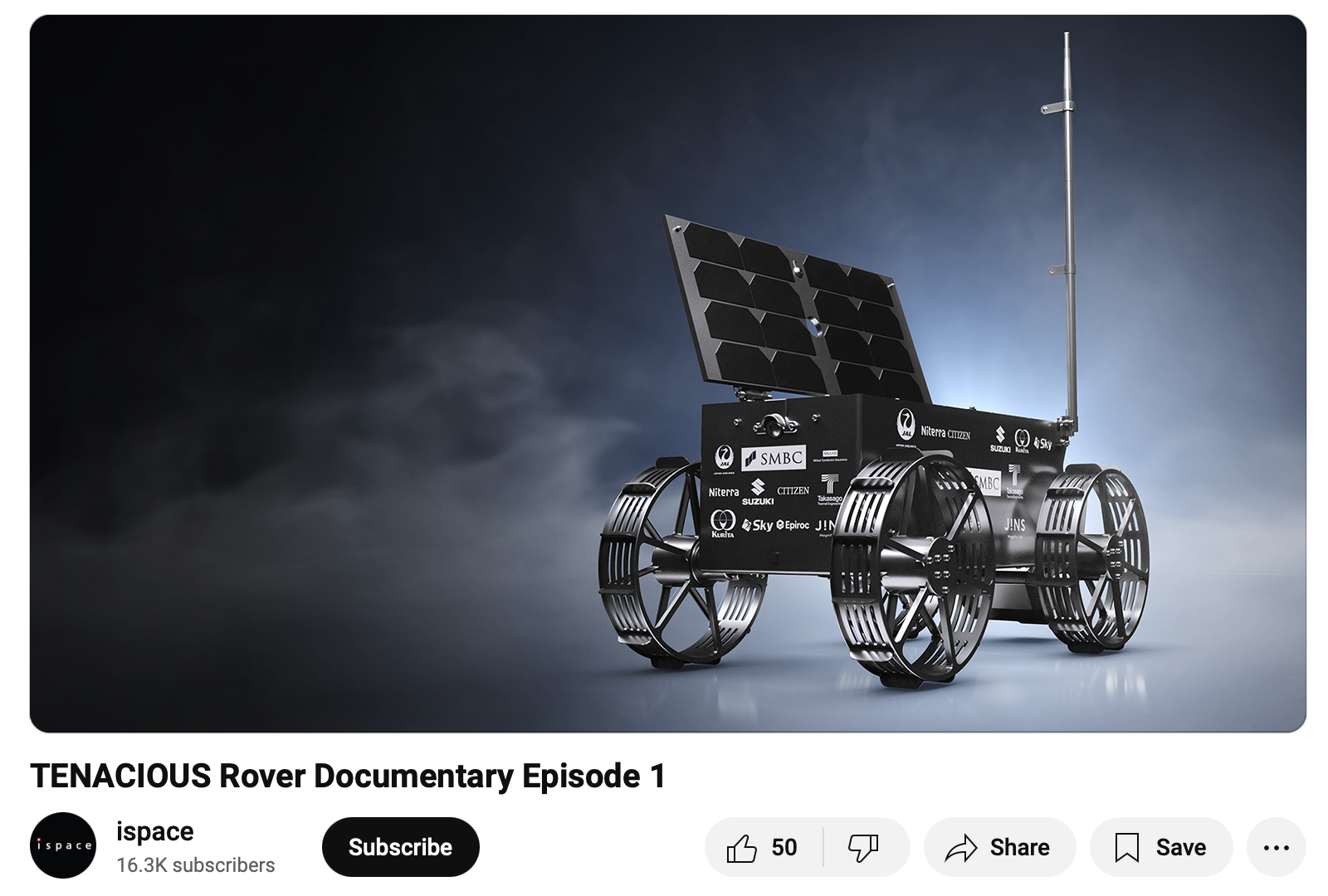
The four-episode documentary includes behind the scenes footage of the development of the TENACIOUS micro rover and interviews of officials and stakeholders. In Episode 1 Marc Serres, chief executive officer of LSA, and Julien Lamamy, CEO of ispace-EUROPE SA discuss the importance of public-private collaboration in lunar exploration. Future episodes will include officials from ispace, the Luxembourg government, the Luxembourg Space Agency and the European Space Resources Innovation Center (ESRIC).
While Episode 1 is online now, a new episode in the documentary series will be released each month during ispace’s SMBC x HAKUTO-R Venture Moon Mission 2. The episodes will be available on YouTube and other social media platforms as well as the LSA web site.
To date, ispace’s SMBC x HAKUTO-R Venture Moon Mission 2 has completed Success 4 of the Mission 2 Milestones. The next Success Milestone (5) is expected to be a Lunar Flyby where the RESILIENCE lunar lander’s orbit will bring it near to the Moon in a first ever maneuver by a Japanese private, commercial spacecraft.
“The collaboration between ispace and the Luxembourg Space Agency has always been positive. We look forward to taking you behind the scenes to see the development of TENACIOUS and sharing the insights from stakeholders in this short but powerful series,” said Julien Lamamy, CEO of ispace-EUROPE. “As Mission 2 continues, we look forward to the lunar flyby and upcoming landing.
“This project’s completion is an important milestone for Luxembourg, and it was key to show why, and how this could all happen. We are convinced that such a documentary will be instrumental in showing Luxembourg’s capabilities and in bringing Tenacious closer to the people – whilst on its way to the Moon!” confirmed Mathias Link, Deputy CEO of the Luxembourg Space Agency.
ispace-EUROPE is the European entity of ispace inc. (ispace), located in Luxembourg. ispace-EUROPE was established in March 2017, under a cooperative agreement with the Government of Luxembourg’s SpaceResources.lu initiative to support the commercialization of space resource development. With this initiative, Luxembourg aims to become a European hub for space resource exploration and utilization.
TENACIOUS was developed with co-funding from the Luxembourg Space Agency through a European Space Agency contract with the Luxembourg National Space Programme, LuxIMPULSE.
Future Missions
ispace is leveraging its global presence through its three business units in Japan, the U.S., and Luxembourg, for the simultaneous development of upcoming missions. Mission 2, featuring the RESILIENCE lunar lander, is led by ispace Japan and was launched on Jan. 15, 2025. It is currently traveling to the Moon. During the mission, the TENACIOUS micro rover will be deployed on the lunar surface to conduct a technological demonstration of regolith extraction as well as mobility on the lunar surface. Mission 3, debuting the APEX 1.0 lunar lander, is led by ispace-U.S. and is expected to launch in 2026. Mission 6, which will utilize the Series 3 lander, currently being designed in Japan, is scheduled to be launched by 2027.
Quelle: ispace
